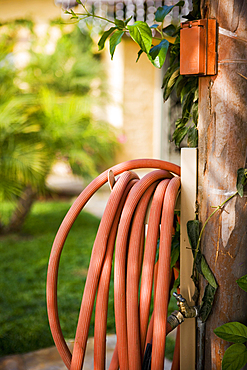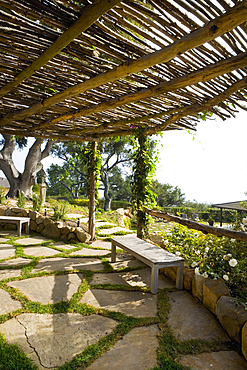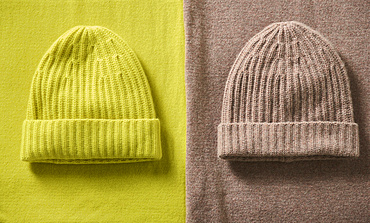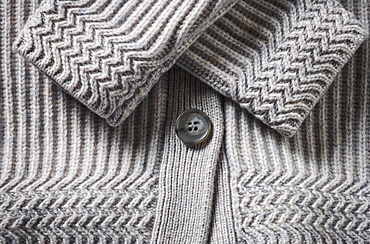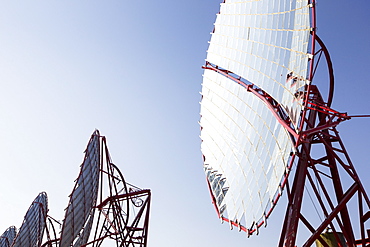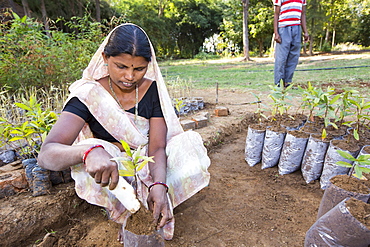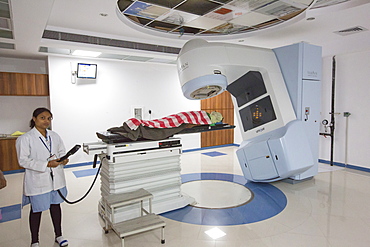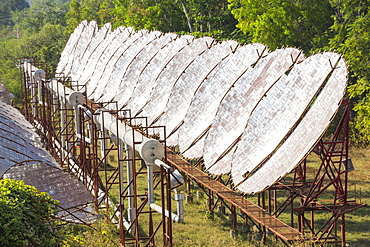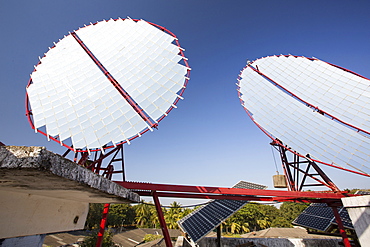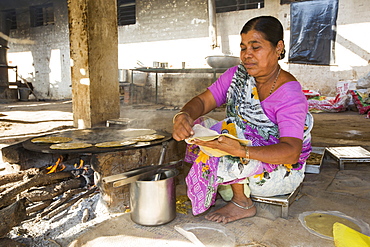Recent searches
Loading...
1178-40999 - Smiling gay Black man leaning on concrete wall
1178-41001 - Smiling gay Black man texting in chair outdoors
1178-40963 - Exterior of an elegant courtyard and pool
1178-40998 - Gay Black man texting in empty parking lot
1178-41000 - Serious gay Black man posing near window
1178-41002 - Smiling gay Black man holding denim jacket
1178-40972 - Glass platter holding coffee cake on counter near window
1178-40970 - Old wooden bench under a large canopy on stone patio
1116-52028 - White knit sweater on mannequin; Studio
1116-52020 - Close-up of a red and green knitted garments folded together and laying on a wooden table; Studio
1116-52032 - Three beige knit sweaters folded in a pile; Studio
1116-52019 - Extreme close-up of the cuff of a grey knit sweater; Studio
1116-52015 - Knit scarves tied on display on a metal rack; Studio
1116-52014 - A grey knit sweater draped with a red knit scarf displayed on a hanger on a black background; Studio
1116-52016 - Knit hat and scarf sets on display; Studio
1116-52022 - Collar and neckline of a grey cardigan sweater with yellow stitching; Studio
1116-52018 - Extreme close-up of the cuffs and button on a grey knit sweater; Studio
1116-52031 - Three knit sweaters folded in a pile; Studio
1350-18 - Gum Nebula area of Vela and Puppis. Taken from Atacama Lodge, Chile, March 19, 2010, with modified Canon 5D MkII and Sigma 50mm lens at f/4, for stack of 10 x 6 minute exposures (Mean combined) at ISO 800 plus 2 x 6 minutes with Kenko Softon filter. High contrast boost and Selective Colour adjustments to bring out nebulocity while retaining neutral sky.
1350-96 - The partial eclipse of the Sun, October 23, 2014, as seen from Jasper, Alberta, in this case shot through thin cloud but that makes for a more interesting photo than one in a clear sky. This is still shot through a mylar filter, on the front of a 66mm f/6 apo refractor using the Canon 60Da for 1/25 sec exposure at ISO 100. The colours are natural, with the mylar filter providing a neutral 'white light' image. With the Sun dimmed a lot by cloud, the longer exposure allowed picking up light and colours in the surrounding clouds.
1350-97 - The partial eclipse of the Sun, October 23, 2014, as seen from Jasper, Alberta, shot under clear skies through a mylar filter, on the front of a 66mm f/6 apo refractor using the Canon 60Da for 1/8000 (!) sec exposure at ISO 100. The colours are natural, with the mylar filter providing a neutral 'white light' image. The big sunspot on the Sun that day is just disappearing behind the Moon's limb. The mylar filter gave a white Sun, its natural colour, but I have tinted the Sun's disk yellow for a more pleasing view that is not just white Sun/black sky.
1116-46781 - Pregnant Woman Sitting Cross-Legged On Bed With Hands On Top Of And Underneath Stomach, Toronto, Ontario, Canada
857-94641 - The Muni Seva Ashram in Goraj, near Vadodara, India, is a tranquil haven of humanitarian care. The Ashram is hugely sustainable, next year it will be completely carbon neutral. Its first solar panels were installed in 1984, long before climate change was on anyones agenda. Their energy is provided from solar panels, and wood grown on the estate. Waste food and animal manure is turned inot biogas to run the estates cars and also used for cooking. Solar cookers are also used, and the air conditioning for the hospital is solar run. 70 % of the food used is grown on the estate. They provide an orphanage, schools for all ages, vocational training, care for the elderly, a specialist cancer hospital withstate of the art machinary, and even have a solar crematorium. This shot shows solar panels that focus the suns rays on heat exchangers to boil oil, which is then sent down to the kitchens below to heat the cookers.
1226-99 - Masdar City, a carbon neutral building project relying on solar energy and other renewable power sources, Abu Dhabi, United Arab Emirates, Middle East
1226-102 - Masdar City, a carbon neutral building project relying on solar energy and other renewable power sources. Abu Dhabi, United Arab Emirates, Middle East
1226-104 - Masdar City, a carbon neutral building project relying on solar energy and other renewable power sources, Abu Dhabi, United Arab Emirates, Middle East
911-10638 - The Muni Seva Ashram in Goraj, near Vadodara, India, is a tranquil haven of humanitarian care. The Ashram is hugely sustainable, next year it will be completely carbon neutral. Its first solar panels were installed in 1984, long before climate change was on anyones agenda. Their energy is provided from solar panels, and wood grown on the estate. Waste food and animal manure is turned inot biogas to run the estates cars and also used for cooking. Solar cookers are also used, and the air conditioning for the hospital is solar run. 70 % of the food used is grown on the estate. They provide an orphanage, schools for all ages, vocational training, care for the elderly, a specialist cancer hospital withstate of the art machinary, and even have a solar crematorium. This shot shows the girls school.
911-10647 - Loch Luichart a 69 MW wind farm being constructed on remote wilderness moorland near Garve in the North West Highlands of Scotland. Its construction will deliver clean, carbon neutral electricity, but does involve massive visual intrusion on wilderness land and tearing up of peat rich moorland to build a network of mountain tracks to access the turbines.
911-10637 - The Muni Seva Ashram in Goraj, near Vadodara, India, is a tranquil haven of humanitarian care. The Ashram is hugely sustainable, next year it will be completely carbon neutral. Its first solar panels were installed in 1984, long before climate change was on anyones agenda. Their energy is provided from solar panels, and wood grown on the estate. Waste food and animal manure is turned inot biogas to run the estates cars and also used for cooking. Solar cookers are also used, and the air conditioning for the hospital is solar run. 70 % of the food used is grown on the estate. They provide an orphanage, schools for all ages, vocational training, care for the elderly, a specialist cancer hospital withstate of the art machinary, and even have a solar crematorium. This shot shows a woman planting trees for onward growth in the Ashrams forests.
911-10648 - Loch Luichart a 69 MW wind farm being constructed on remote wilderness moorland near Garve in the North West Highlands of Scotland. Its construction will deliver clean, carbon neutral electricity, but does involve massive visual intrusion on wilderness land and tearing up of peat rich moorland to build a network of mountain tracks to access the turbines.
911-10636 - The Muni Seva Ashram in Goraj, near Vadodara, India, is a tranquil haven of humanitarian care. The Ashram is hugely sustainable, next year it will be completely carbon neutral. Its first solar panels were installed in 1984, long before climate change was on anyones agenda. Their energy is provided from solar panels, and wood grown on the estate. Waste food and animal manure is turned inot biogas to run the estates cars and also used for cooking. Solar cookers are also used, and the air conditioning for the hospital is solar run. 70 % of the food used is grown on the estate. They provide an orphanage, schools for all ages, vocational training, care for the elderly, a specialist cancer hospital withstate of the art machinary, and even have a solar crematorium. This shot shows a Varian nuclear proton therapy machine in the specialist cancer hospital.
911-10641 - The Muni Seva Ashram in Goraj, near Vadodara, India, is a tranquil haven of humanitarian care. The Ashram is hugely sustainable, next year it will be completely carbon neutral. Its first solar panels were installed in 1984, long before climate change was on anyones agenda. Their energy is provided from solar panels, and wood grown on the estate. Waste food and animal manure is turned inot biogas to run the estates cars and also used for cooking. Solar cookers are also used, and the air conditioning for the hospital is solar run. 70 % of the food used is grown on the estate. They provide an orphanage, schools for all ages, vocational training, care for the elderly, a specialist cancer hospital withstate of the art machinary, and even have a solar crematorium. This shot shows the solar air conditioning for the Ashram's hospital.
911-10639 - The Muni Seva Ashram in Goraj, near Vadodara, India, is a tranquil haven of humanitarian care. The Ashram is hugely sustainable, next year it will be completely carbon neutral. Its first solar panels were installed in 1984, long before climate change was on anyones agenda. Their energy is provided from solar panels, and wood grown on the estate. Waste food and animal manure is turned inot biogas to run the estates cars and also used for cooking. Solar cookers are also used, and the air conditioning for the hospital is solar run. 70 % of the food used is grown on the estate. They provide an orphanage, schools for all ages, vocational training, care for the elderly, a specialist cancer hospital withstate of the art machinary, and even have a solar crematorium. This shot shows solar panels that focus the suns rays on heat exchangers to boil oil, which is then sent down to the kitchens below to heat the cookers.
911-10635 - The Muni Seva Ashram in Goraj, near Vadodara, India, is a tranquil haven of humanitarian care. The Ashram is hugely sustainable, next year it will be completely carbon neutral. Its first solar panels were installed in 1984, long before climate change was on anyones agenda. Their energy is provided from solar panels, and wood grown on the estate. Waste food and animal manure is turned inot biogas to run the estates cars and also used for cooking. Solar cookers are also used, and the air conditioning for the hospital is solar run. 70 % of the food used is grown on the estate. They provide an orphanage, schools for all ages, vocational training, care for the elderly, a specialist cancer hospital withstate of the art machinary, and even have a solar crematorium. This shot shows a Hematology Analyzer for analyzing blood in one of the labs in the specialist cancer hospital.
911-10640 - The Muni Seva Ashram in Goraj, near Vadodara, India, is a tranquil haven of humanitarian care. The Ashram is hugely sustainable, next year it will be completely carbon neutral. Its first solar panels were installed in 1984, long before climate change was on anyones agenda. Their energy is provided from solar panels, and wood grown on the estate. Waste food and animal manure is turned inot biogas to run the estates cars and also used for cooking. Solar cookers are also used, and the air conditioning for the hospital is solar run. 70 % of the food used is grown on the estate. They provide an orphanage, schools for all ages, vocational training, care for the elderly, a specialist cancer hospital withstate of the art machinary, and even have a solar crematorium. This shot shows a cook preparing chapatis on a biofuel stove.
832-176624 - Hurried person in front of a neutral wall
911-9522 - A Windhager biomass boiler that burns carbon neutral wood pellets in a house in Gosforth, Eskdale, Cumbria, England, United Kingdom, Europe
911-9521 - A Windhager biomass boiler that burns carbon neutral wood pellets in a house in Gosforth, Eskdale, Cumbria, England, United Kingdom, Europe
817-423628 - Diving the instructor trains beginning scuba diver to hold neutral buoyancy, Lake Baikal, Siberia, Russian Federation
857-63840 - Male triathlete Adam Russell races bicycle during first annual 2007 Portland Triathlon in Portland, Oregon. The race is carbon neutral.
857-63836 - Male triathlete races bicycle during first annual 2007 Portland Triathlon in Portland, Oregon. The race is carbon neutral.
857-63842 - Male triathlete Tonny Saona races bicycle during first annual 2007 Portland Triathlon in Portland, Oregon. The race is carbon neutral.
817-384817 - Little girls standing on the beach, El Puerto de Santa Maria, Spain Daylight long exposure shot by the use of neutral density filters
817-384822 - People on the beach Daylight long exposure shot by the use of neutral density filters
817-384816 - People on the beach, Sanlucar de Barrameda, Spain Daylight long exposure shot by the use of neutral density filters
911-1215 - Bedzed the UK's largest eco carbon neutral housing complex in Beddington, London, England, United Kingdom, Europe
911-1216 - Bedzed the UK's largest eco carbon neutral housing complex in Beddington, London, England, United Kingdom, Europe
911-1222 - Bedzed the UK's largest eco carbon neutral housing complex in Beddington, London, England, United Kingdom, Europe
911-1223 - Cavity wall insulation at Bedzed the UK's largest eco carbon neutral housing complex in Beddington, London, England, United Kingdom, Europe
911-4596 - East Green carbon neutral beer, United Kingdom, Europe
911-1214 - Bedzed the UK's largest eco carbon neutral housing complex in Beddington, London, England, United Kingdom, Europe
911-1218 - Bedzed the UK's largest eco carbon neutral housing complex in Beddington, London, England, United Kingdom, Europe
911-1811 - Eon's biofuel power station, carbon neutral, fuelled by wood from local woodlands, Lockerbie, Scotland, United Kingdom, Europe
911-1189 - Waste recycling bins at the waste-neutral Eden Project, Cornwall, England, United Kingdom, Europe
911-2859 - Boiling a kettle on a wood burning stove is a carbon neutral way of heating, United Kingdom, Europe
911-1809 - Eon's biofuel power station, carbon neutral, fuelled by wood from local woodlands, Lockerbie, Scotland, United Kingdom, Europe
911-1810 - Eon's biofuel power station, carbon neutral, fuelled by wood from local woodlands, Lockerbie, Scotland, United Kingdom, Europe
911-1441 - Turf roof on eco houses at the Centre for Alternative Technology in Machylleth, Wales, United Kingdom, Europe
911-1217 - Bedzed the UK's largest eco carbon neutral housing complex in Beddington, London, England, United Kingdom, Europe
911-1219 - An charging point for electric cars at Bedzed the UK's largest eco carbon neutral housing complex in Beddington, London, England, United Kingdom, Europe
741-2149 - Hotel Windsor, Rue Dalpozzo, Nice, Alpes Maritimes, Provence, Cote d'Azur, French Riviera, France, Europe
17-4296 - Bedroom suite with multiple images or paintings of Krishna, Devi Garh Fort Palace Hotel, near Udaipur, Rajasthan state, India, Asia
17-4282 - Floor cushions in drawing room of new build home, New Delhi, India, Asia
17-4224 - The contemporary home of a wealthy owner from India's merchant class, a new residence built in New Delhi, India, Asia
You reached the end of search results


